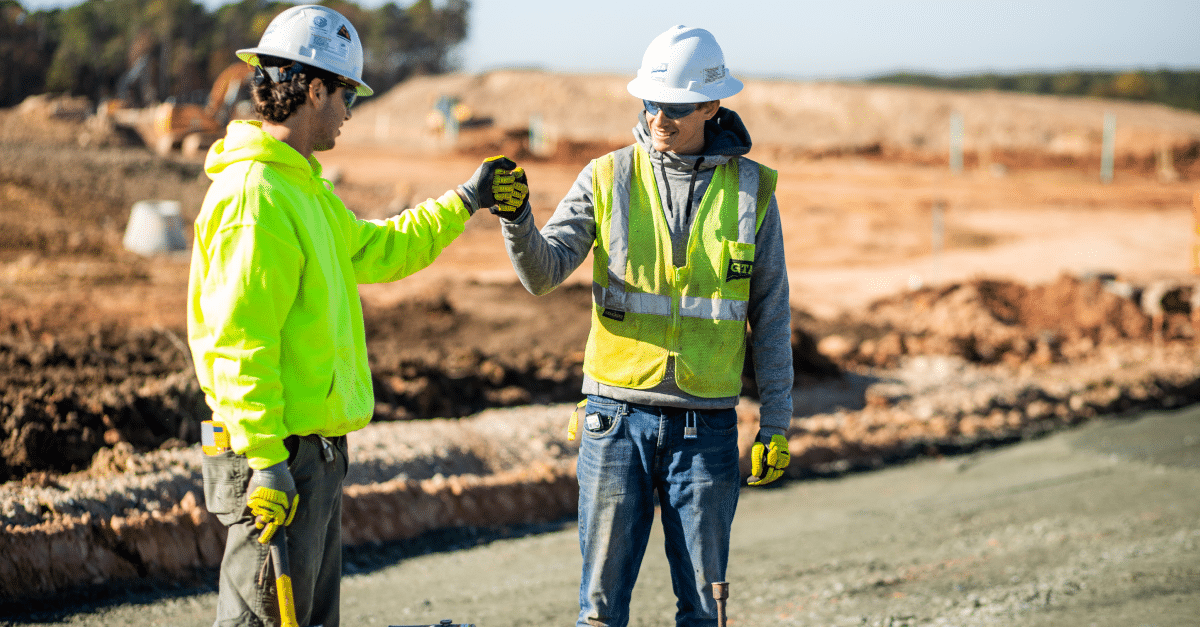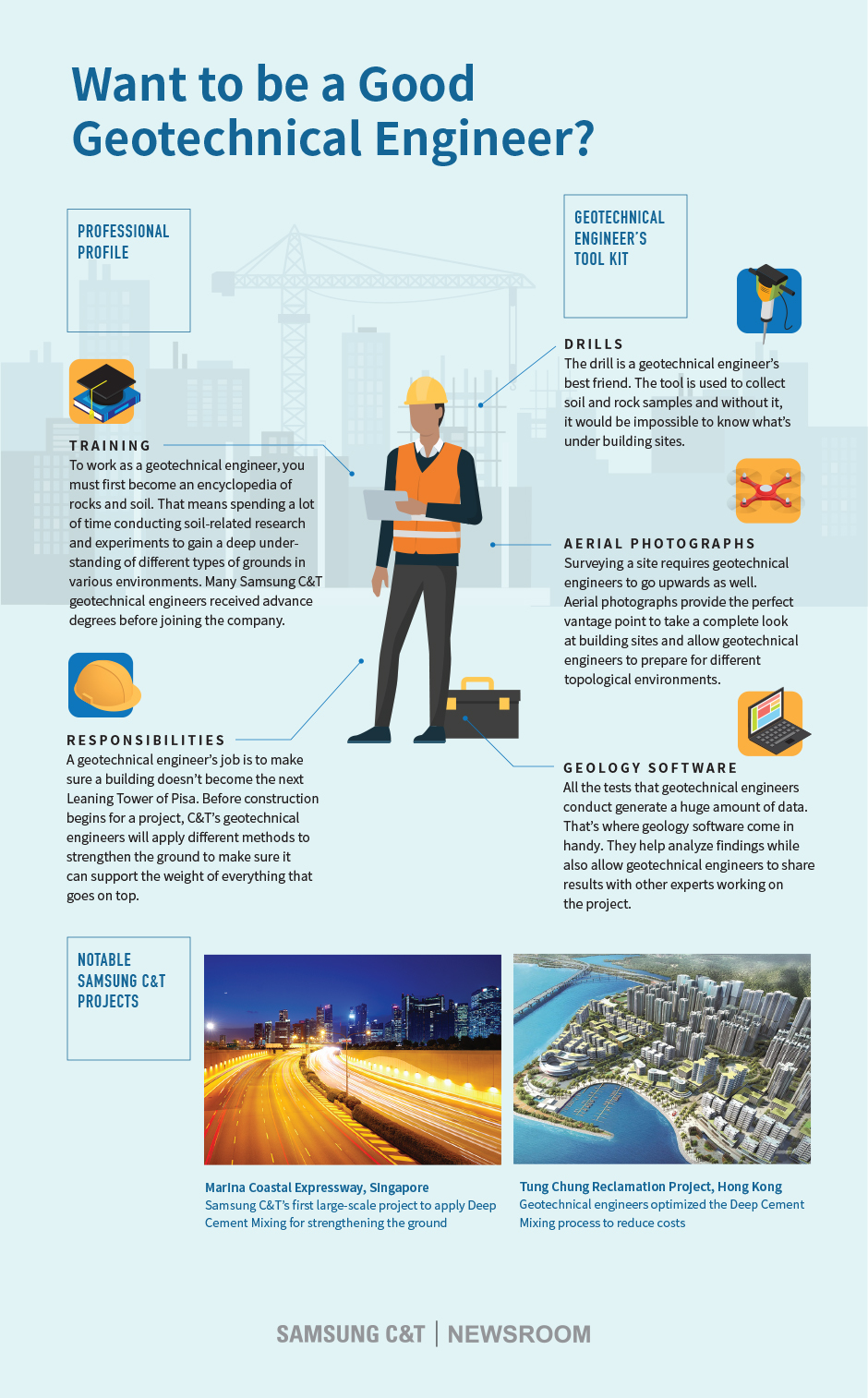The Facts About Geotechnical Engineering For Construction Projects Revealed
The Facts About Geotechnical Engineering For Construction Projects Revealed
Blog Article
Geotechnical Engineering For Construction Projects for Dummies
Table of ContentsGeotechnical Engineering For Construction Projects - QuestionsThe Ultimate Guide To Geotechnical Engineering For Construction ProjectsHow Geotechnical Engineering For Construction Projects can Save You Time, Stress, and Money.More About Geotechnical Engineering For Construction Projects8 Easy Facts About Geotechnical Engineering For Construction Projects ShownGet This Report on Geotechnical Engineering For Construction ProjectsThe Definitive Guide for Geotechnical Engineering For Construction Projects
and Kovacs, W. (1981 ), An Intro to Geotechnical Engineering, Prentice-Hall, Inc. Deep Check Technology (2023 ): Deep Check Tech discovers concealed structures at the website of Denmark's tallest structure. "Geofrost Coring". GEOFROST. Retrieved 20 November 2020. Han, Jie (2015 ). Principles and Technique of Ground Improvement. Wiley. ISBN 9781118421307. RAJU, V. R.Ground Improvement Technologies and Situation Histories. Singapore: Research Posting Solutions. p. 809. ISBN978-981-08-3124-0. Ground Improvement Principles And Applications In Asia. Pariseau, William G. (2011 ). Style evaluation in rock mechanics. CRC Press. Hegde, A.M. and Palsule P (Geotechnical Engineering for Construction Projects).S. (2020 ), Performance of Geosynthetics Reinforced Subgrade Subjected to Repeated Car Plenties: Speculative and Mathematical Studies.
Cengage Learning, Stamford, 666 p. Atkinson, J., 2007. The technicians of soils and foundations. The Observational Method in ground engineering principles and applications.
Unknown Facts About Geotechnical Engineering For Construction Projects
Research laboratory and area screening plays an essential function in this process. By removing samples from the planet's subsurface and applying a collection of tests, geotechnical designers can anticipate the practices of soil layers and assess their viability for various construction efforts. The essence of geotechnical engineering in civil design can not be overemphasized, attributable to several variables: The initial action in any kind of geotechnical study entails identifying the dirt type at the building site.
Recognizing these attributes ensures that only ideal soil types are picked for the development, consequently preventing potential structural failures. The structure serves as the bedrock of any type of building and construction job. Selecting the appropriate structure type is a choice that rests on the extensive analysis offered by geotechnical design. This guarantees the durability and security of structures by fitting the lots they will certainly birth.

Geotechnical website investigation is an important action in the preparation and execution of any kind of building project. It involves the collection and analysis of information connected to the physical properties of soil and rock under a suggested building and construction website. This details is important for the style and building and construction of risk-free, steady, and lasting frameworks.
Some Known Questions About Geotechnical Engineering For Construction Projects.
, likewise recognized as subsurface exploration, entails a collection of tasks aimed at establishing the dirt, rock, and groundwater conditions at a building and construction site. The main purposes are to identify potential geotechnical threats, assess the engineering residential or commercial properties of subsurface materials, and give suggestions for the style and building and construction of structures, keeping wall surfaces, and various other frameworks.
The desk research study assists in recognizing possible geotechnical concerns and intending the subsequent fieldwork. This includes observing the topography, drain patterns, existing frameworks, plant life, and any kind of indicators of instability or disintegration.
The Basic Principles Of Geotechnical Engineering For Construction Projects
Shallow examination pits are dug deep into to directly observe and example the soil and rock. This approach works for researching the upper layers of the subsurface and identifying near-surface threats. Non-invasive geophysical techniques, such as seismic refraction, ground-penetrating radar (GPR), and electrical resistivity tomography (ERT), are made use of to map subsurface conditions and detect abnormalities.
Soil and rock samples accumulated during the area investigation are subjected to lab screening to determine their physical and mechanical buildings. These tests offer essential information for geotechnical analysis and layout.
The key benefit of weblink geotechnical website examination is making certain the security and security of structures. By recognizing the subsurface problems, engineers can develop structures and various other structural elements that can stand up to the lots and environmental forces they will certainly be subjected to. This decreases the risk of settlement, decrease, and structural failure.
The 10-Minute Rule for Geotechnical Engineering For Construction Projects
For instance, understanding dirt attributes can direct the selection of excavation strategies, dewatering techniques, and ground enhancement procedures. This makes certain reliable and safe building methods. Geotechnical website investigations are typically required by developing codes and policies. Complying with these demands makes sure compliance with lawful and safety criteria, avoiding possible legal responsibilities and job hold-ups.
This info is vital for task managers, architects, and specialists in establishing reasonable schedules, budget plans, and contingency strategies. Geotechnical Engineering for Construction Projects. Skyscraper in a Coastal AreaIn a coastal city, a skyscraper domestic structure was intended on a website with suspected loosened sand down payments and a high water table. A thorough geotechnical investigation, including borehole boring, CPT, and geophysical surveys, was carried out
The Definitive Guide for Geotechnical Engineering For Construction Projects
Based on these findings, the foundation layout was modified to consist of deep stack structures extending into secure strata, and ground renovation methods, visit this page such as vibro-compaction, were implemented to reduce liquefaction dangers. This aggressive method made certain the security and stability of the structure while preventing pricey post-construction removal. Framework Growth on a Sloping TerrainA significant facilities project, involving the building and construction of a highway and bridges, was planned on an uneven surface with high slopes.

The Leaning Tower of Pisa (Italy), a famous architectural marvel, is infamous for its unplanned tilt from considerable geotechnical problems. The tower's structure was inadequately designed to take care of the soft, unsteady soil beneath it, bring about irregular settlement and its distinctive lean. Our globe is populated with outstanding framework projectsfrom towering high-rises to sprawling bridgesall standing testament to the development of the different construction tools and methods readily available.
Geotechnical engineering is a specialized field within civil design that concentrates on studying the behavior of earth materials. This branch delves deep into the groundinvestigating just how the soil, rock, and groundwater at a building website can influenceand be affected bythe infrastructure that we put up on and right into them. Before a solitary brick is laid or linked here a concrete foundation put, geotechnical designers probe into the earthgathering crucial information about the website's dirt make-up, rock structure, and groundwater degrees.
Not known Details About Geotechnical Engineering For Construction Projects

is a device used to analyze the stability and load-bearing capability of heaps throughout installment, leveraging the concept of wave breeding. It enhances building and construction effectiveness by giving real-time analyses, therefore ensuring secure and reliable pile foundations. Among the practical applications of geotechnical engineering entails choosing and executing the best techniques for structure building.
Stack driving represents greater than the plain act of putting architectural components into the ground. As a matter of fact, it is a carefully orchestrated process of moving a structure's load past the much less steady soil layers better to the surfacedown to the much more significant strata that exist under. In the instance of pile driving, think about exactly how geotechnical engineers expertly use this method to uniformly distribute the framework's weight.
Report this page